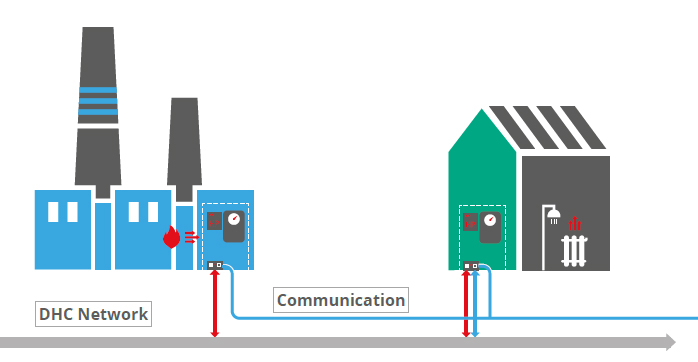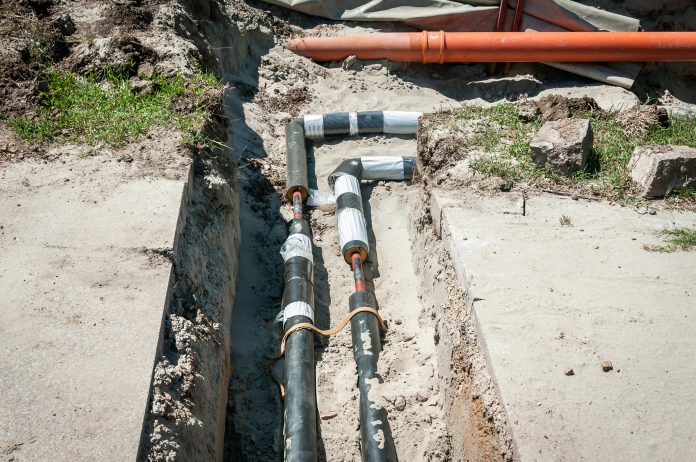Roberto Fedrizzi, Coordinator Sustainable Heating and Cooling Systems at EURAC Research, explores how low-grade renewable and waste heat can be effectively recovered in district heating and cooling networks
72% of the European population lives in urban areas – defined as cities, towns and suburbs. It is here that the demand for heating and cooling assumes the highest density.
At the same time, buildings across our towns and cities are releasing huge amounts of valuable thermal energy into the atmosphere, as waste heat.
Moreover, for historic reasons, cities have born along rivers, lakes and seashores. In addition to providing hydro-electricity, bodies of water can often be used to supply free cooling to district heating and cooling networks. Utilisation of these sources of low temperature renewable energy is highly replicable, because they are accessible right where they are needed.
With this in mind, the overall objective of REWARDHeat is to demonstrate how low-grade renewable and waste heat can be effectively recovered in district heating and cooling networks.
The average medium-sized supermarket in Europe produces enough waste heat from its refrigeration units in one year to meet the thermal energy needs of 200 homes over the same period. It’s not just our supermarkets producing waste heat, a large amount is also being rejected by air-conditioners, industrial processes and datacentres’ chillers.
This wasted heat also produces what is known as a “heat island effect”, which raises the temperature of towns and cities to a few degrees higher than those in the countryside; warmer cities use more energy for cooling and so the wasteful cycle continues.
Introducing Circular Energy concepts
“Closing the energy loop” is the basis of a Circular Energy concept we will need to deal with in the years to come. If we want to effectively tackle the global warming, not only will we need to devise buildings and processes that use less energy, we will also need to make sure energy losses are re-cycled and re-used as much as possible (i.e. as we recycle and re-use materials).
Despite the potential value of waste heat, there are currently few ways to use it, since it is most often rejected into the environment at low temperatures – around 15°C to 30°C – hence using it to directly warm water to use in the home is simply not possible: shower water, for example, is typically used at around 40ºC.
Gathering low-grade renewable heat from water sources, most of the time available between 5°C and 15°C, is equally technically challenging. However, exploiting locally available renewable energy is both technologically possible and environmentally sustainable – in future the amount of high-grade energy like renewable electricity will be limited, as its use becomes more widespread in different sectors compared to the situation today, i.e. in electric mobility.
Therefore, it does not make sense to heat buildings by directly using these sources, for example with electric resistances. Conversely, using technologies like heat pumps allows for the maximum use of low-grade renewable energy sources, while minimising the electricity needed.
Redistributing heat
REWARDHeat is an EC-funded project seeking to move in this direction, by using urban, low-grade waste and renewable heat gathered from multiple, distributed sources and applying it to district heating networks. The central idea is to collect heat from where it is available, recover it into a district heating network and redistribute it into buildings.

To do this effectively from the technical and economical perspectives, REWARDHeat promotes the idea that the network’s distribution temperature needs to be lowered compared to conventional systems. This can be done by either operating the newly built network at neutral-temperature between 10°C and 30°C or retrofitting conventional networks to operate at lower temperatures (55°C maximum supply temperature).
Networks operating at neutral temperature can provide contemporary heating and cooling from the same pipelines, by means of reversible heat pumps that can exchange both heating and cooling with the network depending on the specific customer’s use.
There are limitations to neutral-temperature schemes: research and development activities performed and ground-breaking pilots show that these networks are most efficient in areas with both heating and cooling demands; in this case, networks operated up to 55°C are better suited as they can directly cover heating loads, while gathering heat from low-grade sources is still practical by means of a heat pump.
From monopolistic management to an open heat production market
The actual networks are often monopolistic systems where thermal energy is produced, distributed and sold by a utility company. This results in an easy operation of the plant and easy marketing models. As a drawback, the consumers’ bargaining opportunities are limited once connected to the network. The distributed generation approach triggers the transition from a monopolistic management to an open heat production market.
Business models are being studied, allowing thermal energy exchange on new “free-markets”. The business models consider the wide variety of players connected to the grid – from large companies to single-family customers – assuring remuneration based on the measured energy input/output. This demonstrates that the solutions are economically viable and technically feasible, thus stimulating acceptance and promotion of thermal energy production from renewables and waste heat. In particular, the concept of “heat as a service” is being explored – heat sold to the customer should not be treated as a mere commodity, rather a number of services should be built around the energy marketed.
As an example, datacentres can sell their waste heat to the district heating network, but scenarios are also possible for waste heat to be collected free as this saves money in terms of reduced electricity consumption by air coolers.
Moreover, the green dividend for companies providing their waste heat for free should not be ignored. A company’s products may become more attractive to customers looking for green solutions, if the company can demonstrate a lower environmental impact with recycling part of its energy and delivering free energy to the community.
Using heat pumps in district heating and cooling networks not only adds to the recovery of low-grade energy that is normally wasted, but it also builds a solid link with the electricity grids – aggregating the electric loads related to the heat pumps installed, the district heating and cooling network manager can also sell balancing and storage services to the electricity grid.
The research leading to these results has received funding from the H2020 programme, under Grant Agreement No. 857811, Renewable and Waste Heat Recovery for Competitive District Heating and Cooling Networks – REWARDheat.
Please note: This is a commercial profile











